Aliso Village, east of downtown L.A., was a low-income housing complex that was built in the 1940s and torn down in 2000. It is here that Hernandez was born and raised. The Aliso Village images are haunting and empty. They include photographs of graffiti filled walls (Aliso Village 16) and brightly painted closets (Aliso Village 14). To make these images Hernandez would sneak into the buildings when the demolition crew was not there and roam around the vacant spaces. The images evoke memories of another time, when the rooms were furnished and the dwellings populated.
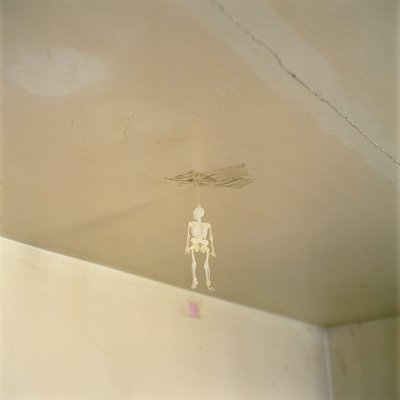
Aliso Village #3
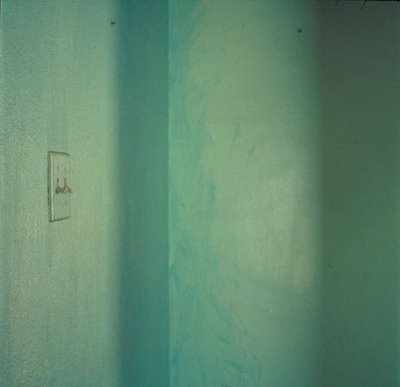
Aliso Village #9
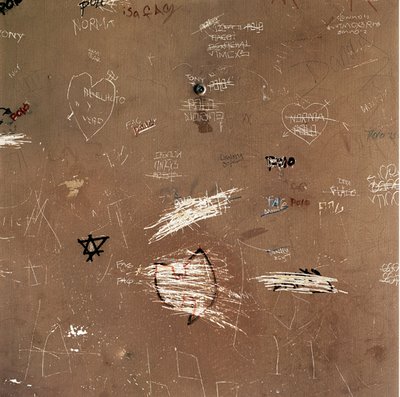
Aliso Village 16
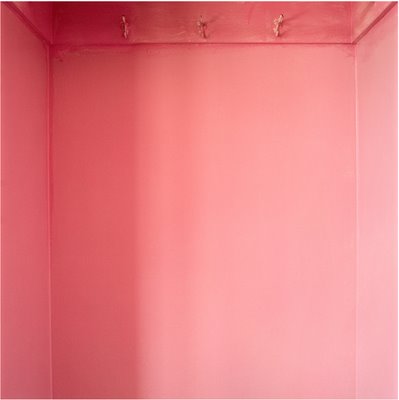
Aliso Village 14
by Jody Zellen
Hernandez is a gifted photographer. He closes in on his subject in order to reveal its intricate details. In the series Landscapes of the Homeless, begun in 1988 and finished in 1991, he carefully documented the out of the way places the homeless retreated to. While photographing these encampments he made sure that no one was about, so as not to disrupt the life of its inhabitants. In these works Hernandez is a voyeur looking in at a community that is obviously other. Yet it is the place, not the people, that interests him.
The resulting large color photographs are aestheticized documents of the homeless' horrible living conditions. These are places built for shelter and survival. Hernandez is not out to artify his subject but rather to point out the inherent contradictions within the urban environment. To make these photographs Hernandez scouted out places where the homeless congregate. The resulting pictures document not only the ingenuity of the homeless but Hernandez' sensitivity to their plight. Viewed at a distance, the images appear to be photographs of the natural landscape. Upon close examination the details of habitation reveal themselves. The contrast between "one's expectation of beauty and the reality of homelessness" is central to the works' impact.

Landscapes for the Homeless #24, 1989
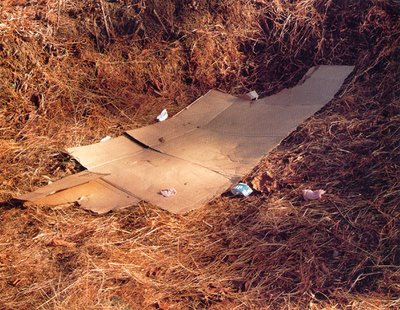
Landscapes for the Homeless #17, 1989
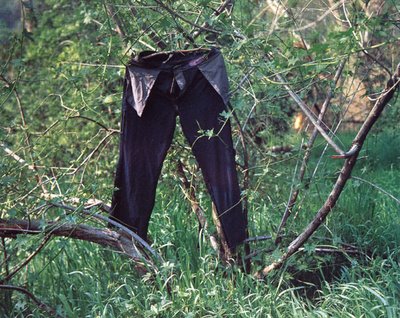
Landscapes for the Homeless #54, 1989

Landscapes for the Homeless #18, 1989
Questions-
- How does knowing Anthony Hernandez' personal history influence what you think about the Aliso Village photographs?
- Do you agree with Zellen, when she writes "Hernandez is not out to artify his subject but rather to point out the inherent contradictions within the urban environment?"
- How does the lack of any human presence effect your experience of Hernandez' images?

7 comments:
You know that this was home to him at one point so there is a big sense of familiarity here. He has chosen these compositions because he has personal feeling about them. There is a comfort there that is felt by the viewer. I think these are pieces of art but yes I do think they are defiantly documentations of the urban environment. I think the lack of humans make these photographs stronger. If there were a person in these, especially the homeless series, it would be distracting for the viewer and draw attention away from his point. I think there doesn’t always need to be a person in a photograph for their story to be told. We know what we need to know about this people to appreciate these.
Knowing his history does make a difference, but I still see through his work a sense of saddness or emptiness implied. I do beleive he has an artistic eye, but he is very doc. style. If I were to flip through a book with 100 photographers I probably would not stop on his shots but I appreciate the attention he is trying to give to his subjects.
The lack of people on Hernandez work does not bother me at all. His compositions are very powerful even without people. One does not have to have people on the photographs to show their presence at a place. There are some many hints that human beings leave behind themselves speciallty at their homes. Even if I did not know the story behind his works, I would have the sense of it. So I do appreciate his works because they can speak for themselves.
I like Anothony Hernandez, of the two photographers posted here. Although, I don't really like the Aliso Village prints. I guess maybe I don't get it, the deep concept of themor whatever but they just seem too plain and boring to me. I do like the Landscapes of the Homeless though. I appreciate the lack of a person in this series. That quality gives it more of a sense of the desolation of homelessness. It seems they would be paradoxically placed if there were people in the photographs. I like the cardboard on the hay and the jeans in the tree the best.
The images feel very empty, isolated and alone. I think if he had included people the images would have a very different feel and they would say something different from what they say now. Looking at these images, I think Hernandez is making a comment about how the people who live in these places are treated in our society. I mean, they're people just like everyone else, but they're avoided and ignored. These are very powerful images.
I dont really feel that the backstory to the Asliso Village series does that much to the meaning. To me it's still a study of abandonment, places previously cared for but now are ghosts of what they used to be. The lack of human prescence just helps add to the idea of the contradictions of our enviroment. Homes not lived in, outdoor areas not ment for living clearly being lived in. As a combined series it's powerful in it's contrasting subjects.
These photographs can speak for themselves really, they don't need information behind them for me. I like how you never know who is actually living there- since there are no humans within the picture. It always makes you wonder- who are they? how many of them are there?
Post a Comment